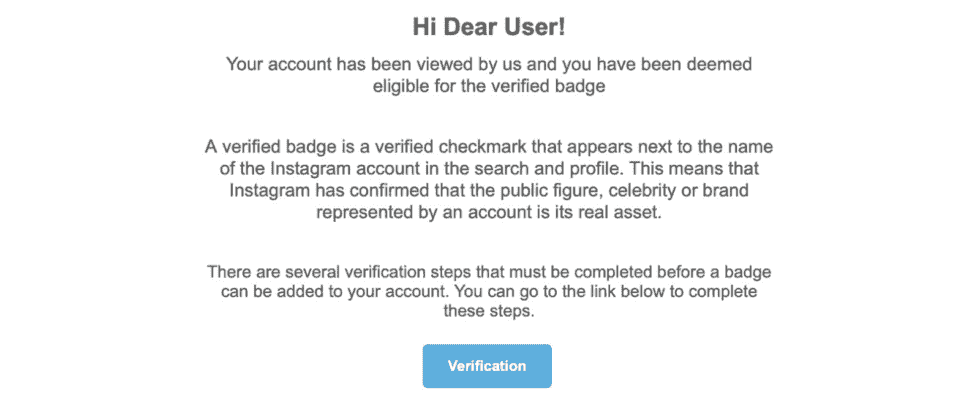Cyber criminals want to lure you into a phishing trap with the coveted blue tick. Avoid the scam if you want to keep your Instagram account.
Scammers want to hack your Instagram account with a phishing scam. (Source: consumer center)
- Scammers promise you the blue tick on Instagram in a phishing email.
- With the scam they want to take over your account.
- Ignore the email and delete it.
On Instagram, the blue tick is the identifier for verified accounts. Many companies, organizations and personalities swear by the symbol. Cyber criminals are also aware of this popularity and are currently exploiting it in a phishing scam. The target of the scam is your Instagram account.
In the said message, the criminals claim that your account meets all the necessary criteria and you are entitled to the blue tick. For verification, you supposedly have to go through several steps and click on the attached link that says “Verification”. But if you do that, you are only helping the scammers to take control of your Instagram account.
As the consumer advice center reports, the link will take you to a fake Instagram page that asks for all the necessary data to take over your account.
Instagram itself would never approach you to offer you the blue tick. You have to apply for it yourself via the settings. Under no circumstances should you open the link. We recommend that you simply delete the email.
Simple signs: This is how you recognize every phishing email
A first indication that you have received a phishing email: the email will ask you to confirm personal data or to enter it on a website. This Under no circumstances should you comply with the request. In addition, criminals often use the official logos of the companies they are copying in their emails, but not official sender addresses.
If you find the sender suspicious, you should read the email twice. You will often find spelling mistakes or inconsistencies in German grammar. The attackers usually do not write their emails themselves, but instead use automatically generated messages or translate known emails with a translation program. But why all the effort?
What do criminals achieve with phishing attacks?
Phishing is used on the Internet to collect real user data. Money can be made with these if e-mail addresses, names and other information are sold for advertising purposes or passed on in criminal forums. With the data obtained, cyber criminals can also address future phishing attacks in a more targeted manner, making their attacks more effective.
Did you receive a suspicious email?
Forward them to [email protected]
or follow us on:
Phishing Checklist
- ✔
Spelling mistake? - ✔
Sensitive data requested? - ✔
Official logos? - ✔
Unknown sender?
Attachments and links contained in malicious e-mails also often inject malware or viruses onto your computer. In addition, you should not simply ignore suspicious emails. Forward them to the above email address and help us report future phishing attacks.
More fraud alerts on netzwelt – stay one step ahead of cybercriminals
But phishing emails are not the only danger lurking on the internet. In addition to fraud attempts, there are all kinds of viruses, Trojans and malware that can infect your computer. Unfortunately, data scandals are also part of everyday digital life. You can see the five most recent articles on the subject of “Scam Alerts” below:
Do you want to stay informed about the latest fraud reports, Subscribe to netzwelt on Twitter, Facebook and Instagram. You can also find all articles on the subject on the next page.
Don’t miss anything with the NETWORK-Newsletter
Every Friday: The most informative and entertaining summary from the world of technology!
